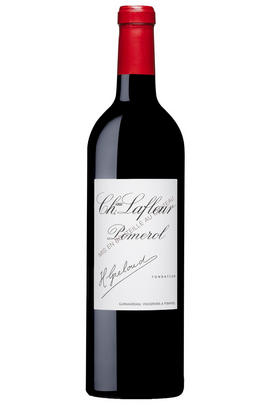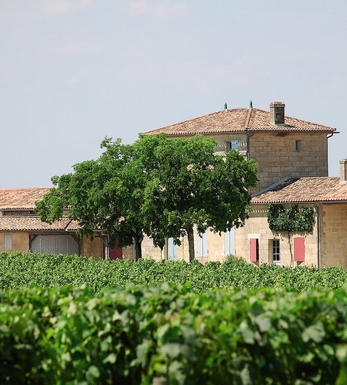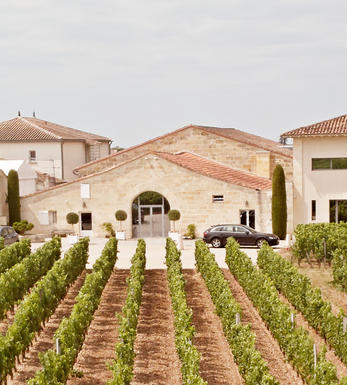
2008 Château Lafleur, Pomerol, Bordeaux

Critics reviews
Neal Martin - 30/06/2017
Robert Parker - Wine Advocate - Apr-2009
About this WINE

Chateau Lafleur
Château Lafleur is A tiny 4.5-hectare Pomerol property located opposite Pétrus and producing wines of comparable quality. Lafleur is owned and run by Sylvie and Jacques Guinadeau. Its vineyards are situated on the gravel-rich Pomerol plateau and adjoin those of La Fleur-Pétrus. The soils here are particularly deep and are enriched by deposits of potassium and iron. Only natural fertilisers are used and yields are painfully low, even by Pomerol standards.
Lafleur's wine is typically a blend of Merlot (50%) and Cabernet Franc (50%). It is aged in small oak barrels (50% new) for 18 months. Wines from Lafleur display a spectacularly intense perfume (partly attributable to the high percentage of Cabernet Franc in the blend) and display layers and layers of concentrated, black fruits, minerals, tobacco spices and creamy liquorice on the palate. The best vintages can last for up to 50 years.

Pomerol
Pomerol is the smallest of Bordeaux's major appellations, with about 150 producers and approximately 740 hectares of vineyards. It is home to many bijou domaines, many of which produce little more than 1,000 cases per annum.
Both the topography and architecture of the region is unremarkable, but the style of the wines is most individual. The finest vineyards are planted on a seam of rich clay which extends across the gently-elevated plateau of Pomerol, which runs from the north-eastern boundary of St Emilion. On the sides of the plateau, the soil becomes sandier and the wines lighter.
There is one satellite region to the immediate north, Lalande-de-Pomerol whose wines are stylistically very similar, if sometimes lacking the finesse of its neighbour. There has never been a classification of Pomerol wines.
Recommended Châteaux : Ch. Pétrus, Vieux Ch. Certan, Le Pin, Ch. L’Eglise-Clinet, Ch. La Conseillante, Ch. L’Evangile, Ch. Lafleur, Trotanoy, Ch. Nenin, Ch. Beauregard, Ch. Feytit-Clinet, Le Gay.

Merlot/Cabernet Franc
Merlot and Cabernet Franc are grape varieties commonly used in Bordeaux-style blends, particularly in the Bordeaux region of France. When these two grapes are blended, they can create a wine that combines the best characteristics of each variety.
Merlot is known for its smoothness, soft tannins, and ripe fruit flavours. It often contributes black cherry, plum, and chocolate flavours to the blend. The grapes are relatively easy to grow and ripen earlier than other Bordeaux varieties, making them versatile for blending.
Cabernet Franc, on the other hand, adds structure, depth, and complexity to the blend. It typically brings aromas of red fruits such as raspberry and strawberry, along with herbal notes like bell pepper and tobacco. These grapes have thinner skins and can be more challenging to cultivate, requiring specific growing conditions to reach their full potential.
When Merlot and Cabernet Franc are combined, the result is a well-balanced wine with various flavours and aromas. The blend often exhibits a Bordeaux wine's medium to full body, along with a smooth texture and moderate tannins. The specific flavour profile can vary depending on the proportions of each grape in the blend and the terroir and winemaking techniques employed.


Buying options
Add to wishlist
Description
Tasted with Baptiste Guinaudeau, the 2008 Lafleur is a wine for which I have a lot of time, and as it approaches a decade old, it is beginning to loosen up a little. There is plenty of fruit on the nosemore than I have encountered on previous bottles, with a mixture of red and black fruitand a hint of bell pepper and sage. The main difference is that those previously rigid tannin have loosened their collar in recent months; therefore, this Lafleur is now entertaining the notion of drinkability. There remains a linearity to this Lafleurand there is still that backboneyet it seems to flow nicely across the mouth, and there is superb mineralit on the finish. It's probably destined to be overshadowed by the succeeding two vintages, but I suggest you do not overlook the 2008 Lafleur.
Neal Martin - 30/06/2017
wine at a glance
Delivery and quality guarantee